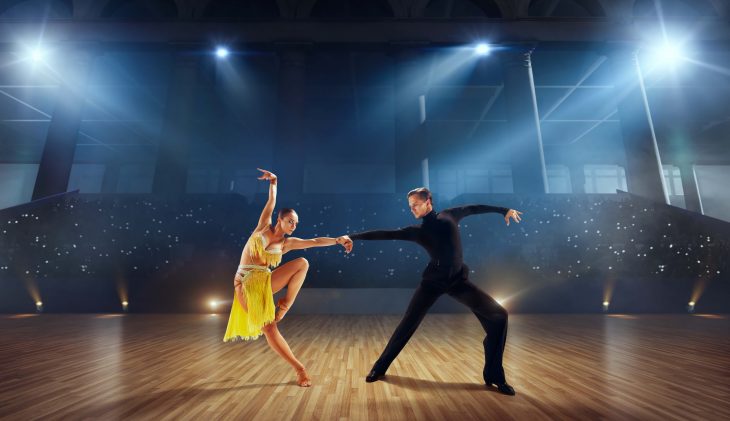
Over the years, various types of ballroom dance have become popular thanks to TV, film, and even theater. Seeing dancers compete on shows like Dancing with the Stars and So You Think You Can Dance totally made the type of dance accessible for many. And while it certainly takes a lot of skill to become a professional, you can also just try ballroom dancing for fun! In fact, ballroom dancing is a great recreational activity for people of all ages and genders.
With so many types of ballroom dances, the choices could get overwhelming. Don’t worry because this list got you covered! Read on to learn about the different types of ballroom dances, their history, characteristics, and more.
What is ballroom dance?
Before listing down the different types of ballroom dance, it is important to first define what ballroom dance is. Most people usually think ballroom dance only refers to competitive ballroom dancing, which is called “dancesport”. Films and TV shows often portray only this side of ballroom dancing, where performers wear flashy costumes and win big trophies.
While dancesport is indeed a big part of ballroom dance, it isn’t the only thing ballroom dance offers. In general, ballroom dance can refer to either competitive or social partner dances, where two performers follow certain step patterns. These step patterns differ depending on the type of ballroom dance.
What is the history of ballroom dance?
Ballroom dance has been around for centuries. Its first record was during the 16th century, when a French author named Jehan Tabourot published Orchésographie. This book contained his study of French renaissance social dances. One example is the “galliard”, which Shakespeare also mentioned in his writing.
During the Renaissance, ballroom dancing was popular among royalty and noble families. They would hold fancy social gatherings in large function halls called “ballrooms”, where guests would eat, schmooze, and perform social dances together.
Ballroom dance continued to rise in popularity in the early 20th century. During this time, jazz music became prominent, with more types of dances invented.
In the 1920s, Broadway and films also featured ballroom dancing. Vernon and Irene Castle are notable examples from this time. This husband-and-wife tandem appeared in several performances, reviving the popularity of ballrooms.
By the 1930s, a dancesport team was formed in London, and soon different competitions for different types of ballroom dance emerged.

What is competitive ballroom dancing?
Another name for competitive ballroom dancing is dancesport. As a competitive sport, ballroom dancing requires performers to perform their routine perfectly. Precision, appearance, and stage presence are some factors judges will score contestants on. Missteps, poor forms, or other mistakes will incur deductions.
There are two international governing bodies that regulate and organize dancesport competitions, namely the World Dance Council (WDC) and the World DanceSport Federation (WDSF). These organizations regulate the rules, dance area sizes, and scoring system for competitions.
Who can try ballroom dancing?
Dancesport requires a high level of athleticism because of its complicated choreography. A competitive dancer will need to train their flexibility, endurance, and overall body strength in order to execute different dance routines.
However, this doesn’t mean only professionals can try ballroom dancing. Nowadays, many schools offer ballroom dancing as a class that students can try for their physical education. Clubs and other local organizations also offer ballroom dancing classes for people of all genders and ages.
It is a great hobby where you can meet all kinds of people. Furthermore, ballroom dancing is also a fun way to exercise! It conditions and tones your body and improves your mental health by relieving stress and uplifting your mood.
Before signing up for classes, of course, it’s a good idea to learn about the different types of ballroom dance. That way, you’ll know exactly what you’re getting into!
What are the different styles of ballroom dance?
There are several types of ballroom dance, but most of them fall under the four main styles of ballroom dance. Some types of ballroom dance can overlap because some styles have their own variation, but each of them still has distinct characteristics.
International School
Regulated by the WDC and WDSF, the International School of dance comprises the International Standard and the International Latin categories. It is most popular in England, where it was developed. This school of dance doesn’t include turns or dips in its choreography. Instead, it focuses on the chemistry and closeness between dance partners.
The International Standard comprises traditional routines where one partner leads and another follows. Slow and smooth movements are the primary focus of this style.
On the other hand, the International Latin style focuses on Latin dances performed outside of the US and Canada. These include the cha-cha, samba, rumba, and more. These dances are all about showing off the lines of the dancer’s long legs.
American School
Unlike the International schools, the USA Dance and Canada Dancesport (CDS) regulates competitions under the American School. This school of dance comprises the American Smooth and American Rhythm categories.
The American Smooth style focuses on fluidity and gracefulness. The American Smooth and International Standard often overlap with similarities. In fact, both styles have their own versions of certain types of ballroom dance. For instance, the American Smooth and International Standard each have their own version of the waltz. However, the American Style can include turns, dips, and other diverse footwork.
Meanwhile, the American Rhythm features upbeat music and movement. It is a much more energetic style where partners dance to Latin American music in US and Canadian competitions.
Nontraditional ballroom dances
Outside of competitive ballroom dancing are the nontraditional types of ballroom dances. These include partner dances that have either influenced or been influenced by the traditional styles of ballroom dancing.
This includes the Latin Nightclub Style, which emerged from social dancing in Latin nightclubs. Another style that falls in this category is the Swing dance from the 1920s.
With its definition, history, and schools out of the way, it is now time to learn about the different types of ballroom dance.
What are the different types of ballroom dance?
Waltz
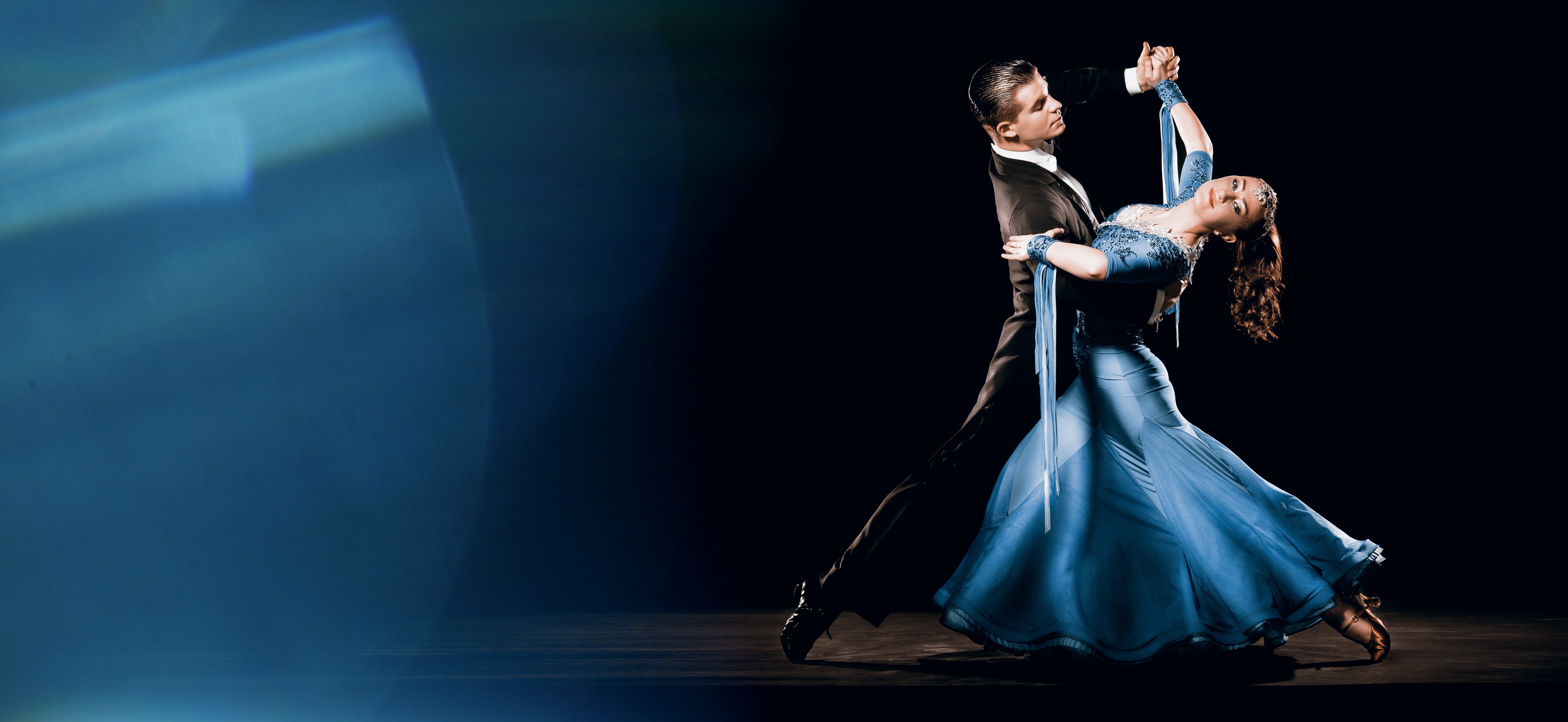
One of the most popular types of ballroom dance is the waltz. The word, “waltz”, comes from the German word, “Walzer”, which means “to roll or revolve”. The earliest mention of the waltz is in 16th century Europe. These accounts detail two dancers holding each other close as they moved together.
Waltz is a slow and elegant dance where the partners glide around the dance floor. The ballroom dancers focus on showing off long and flowing movements with rise and fall techniques.
In the International Standard, the dancers never break away from their embrace while dancing. On the other hand, the American Smooth waltz involves side-by-side steps and spins.
Aside from these two, there are other variations of the waltz dance. Some popular examples are the Mexican waltz, the Peruvian waltz, and the traditional Irish waltz.
Foxtrot
Another type of ballroom dance is the foxtrot. The foxtrot is a partner dance that arose in the early 20th century. Popularized by Vernon and Irene Castle, the foxtrot is a smooth, versatile dance where partners move across the dance floor.
The foxtrot looks similar to the waltz as both focus on long, gliding movements and rise and fall techniques. However, the two still differ. While the waltz is danced to a time signature of 3/4, the foxtrot uses the 4/4 time signature instead.
The foxtrot also comprises both slow and quick footwork. The step pattern in foxtrot is usually Slow-Quick-Quick or Slow-Slow-Quick-Quick, with the first and third steps accented.
This ballroom dance is under the American Smooth and the International Standard styles. The American Smooth uses a tempo between 120 and 136 beats per minute. The International Standard foxtrot, on the other hand, uses a faster tempo, with 112 to 120 beats per minute.
Tango
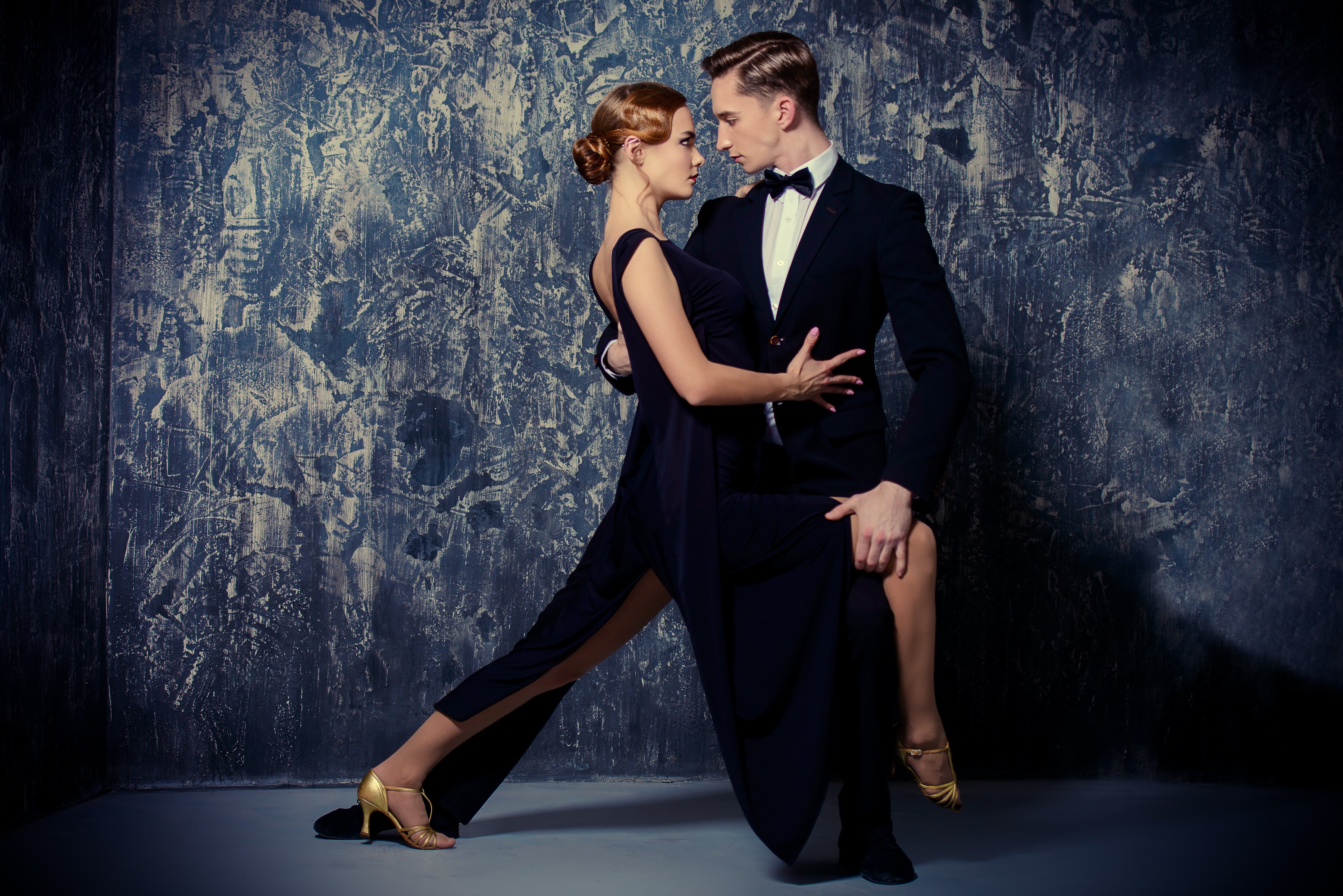
Among the types of ballroom dances, the tango might be the most popular. The tango is a partner dance featured in many films, TV shows, and plays.
This ballroom dance originated in the streets of Buenos Aires in Argentina in the 1880s. It was a social dance performed by the lower classes in bars and brothels to entertain patrons.
Influenced by African, South American, and European cultures, tango soon spread across the world. Its popularity began in Paris and soon reached Berlin, New York City, and Finland. Today, the tango is a part of the UNESCO Intangible Cultural Heritage list.
The tango is a sensual and sharp dance where partners keep their knees locked and their feet grounded. Ballroom dancers use snappy footwork, dramatic head-turning, and staccato movements.
Viennese Waltz
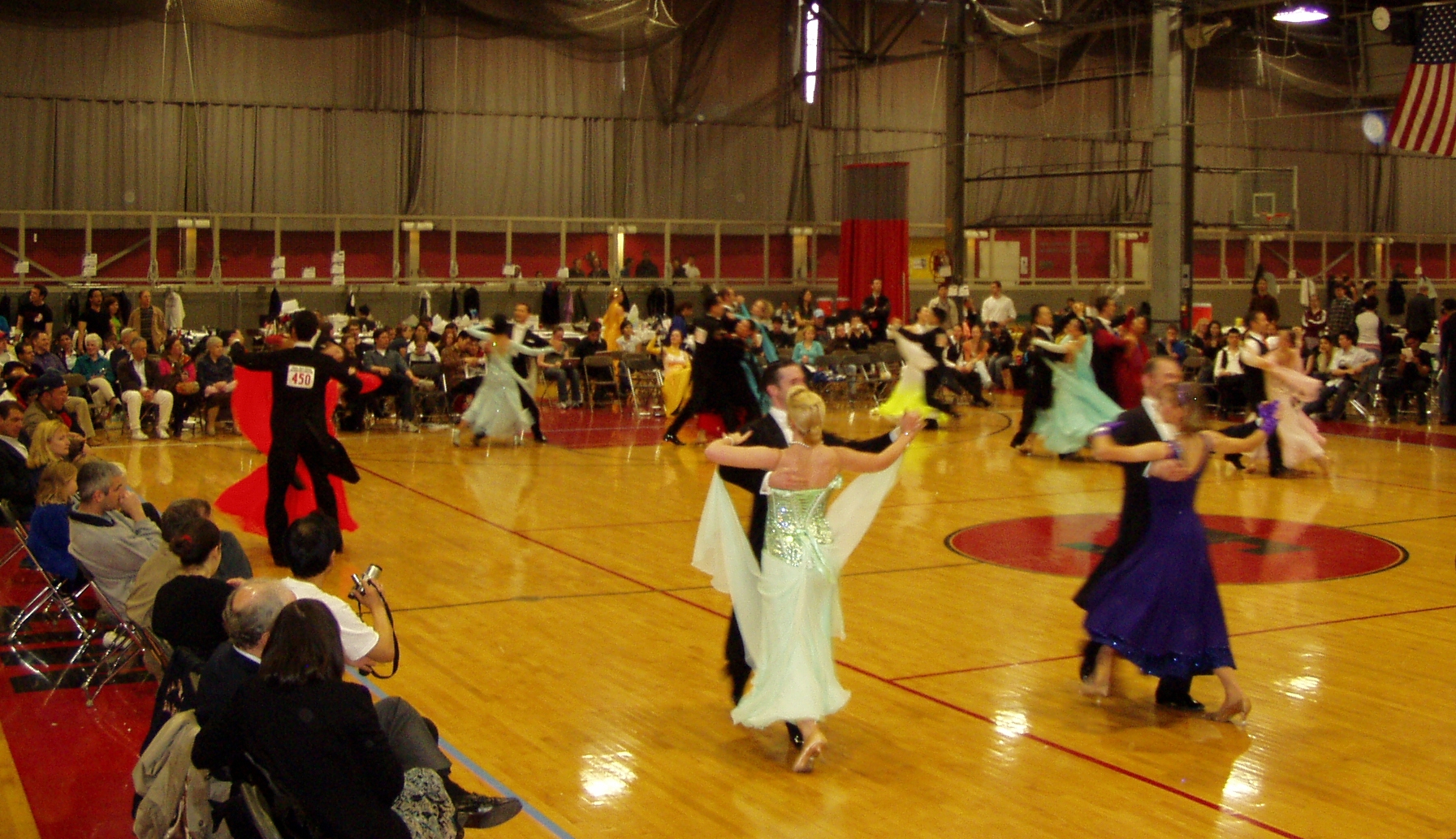
As the name suggests, the Viennese waltz is a variation of the waltz. The Viennese waltz originated in Vienna, Austria during the 18th century. While the English waltz is a slow dance, the Viennese waltz is fast-paced. In fact, the Viennese waltz can be up to four times faster than the waltz.
Even at such a fast pace, the dancers must perform elegantly. A Viennese waltz routine usually comprises lots of rotations with steps during or in between. Because of this, many consider the Viennese waltz one of the hardest types of ballroom dances to learn.
Both the International Standard and the American Smooth have their own versions of the Viennese waltz. The International Standard style requires dancers to be in a “closed position”. This means partners must always hold and face each other. Meanwhile, the American Smooth style affords the dancers more freedom.
Cha-Cha
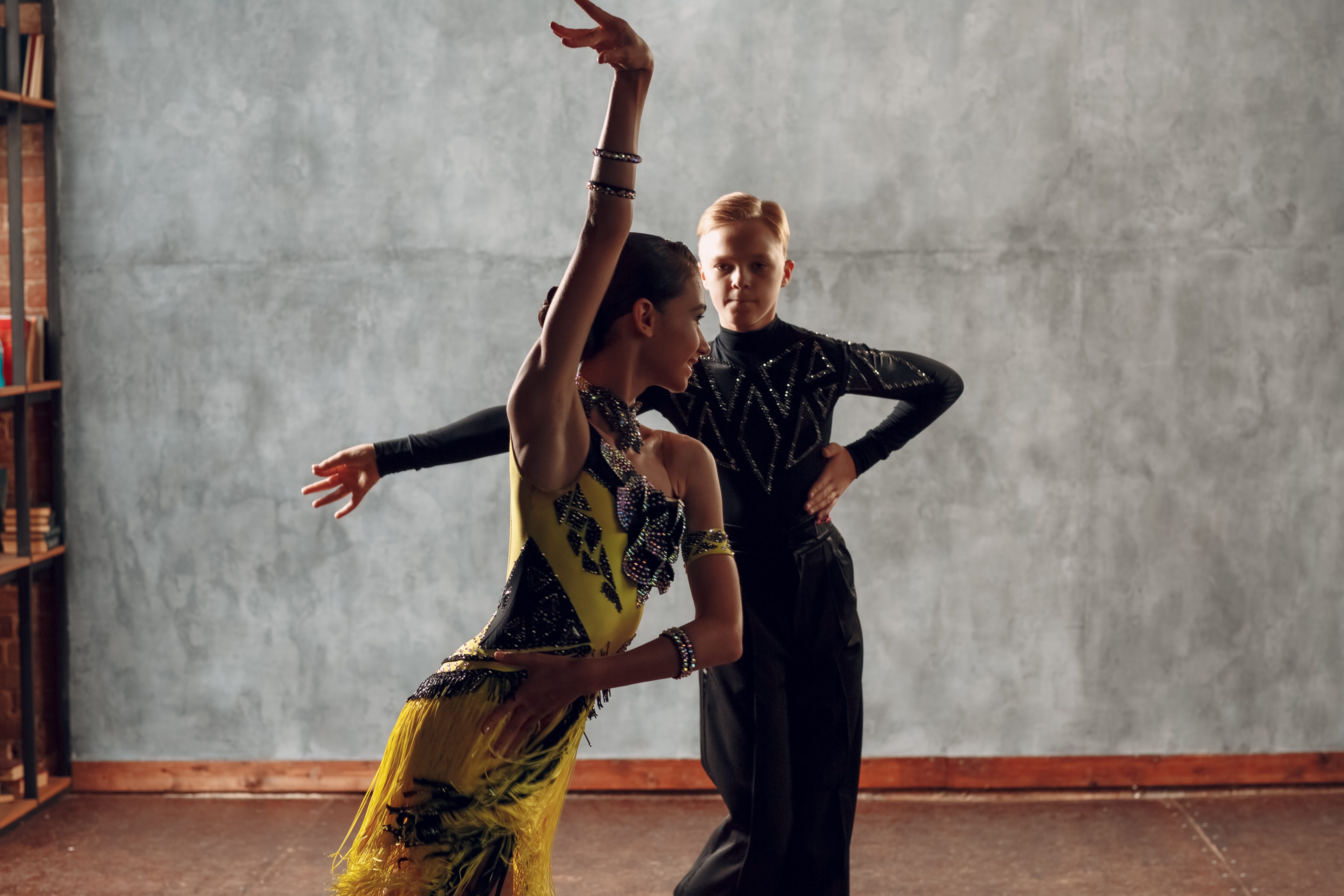
The cha-cha, sometimes “cha-cha-cha”, is a Latin ballroom dance from Cuba. It emerged in the 1940s, following the influences of the mambo and rumba. Its name comes from the count of its step pattern, where partners dance to the rhythm “one, two, cha-cha-cha”.
Among the different types of ballroom dance, the cha-cha-cha is most known for its flirty and energetic style. Dancers usually perform the cha-cha to energetic and happy music with 110 to 113 beats per minute.
The cha-cha falls under the American Rhythm style and the International Latin style. Both styles focus on bent knees and hip movements. In the American Rhythm style, however, the dancer achieves the hip movements by dancing from a bent leg to a straight leg.
Rumba
Out of all the types of ballroom dance, the rumba might be the most romantic one. The Rumba, sometimes “rhumba”, is a ballroom dance people call the “dance of love”. In a way, the dance is a retelling of a love story by the dancers. They use swaying hip movements and sharp eye contact to emphasize the chemistry between them.
The Rumba did not emerge in the United States until the early 1920s, but its roots are of Cuban origin. In fact, people also call rumba the “Grandfather of the Latin dances”.
While performing, the ballroom dancers use their bent knees to create large hip movements. These hip movements are called the “Cuban motion” or “Cuban action”. This is a distinct feature of both the American Rhythm and the International Latin styles. However, the American Rhythm is faster than the other style.
East Coast Swing
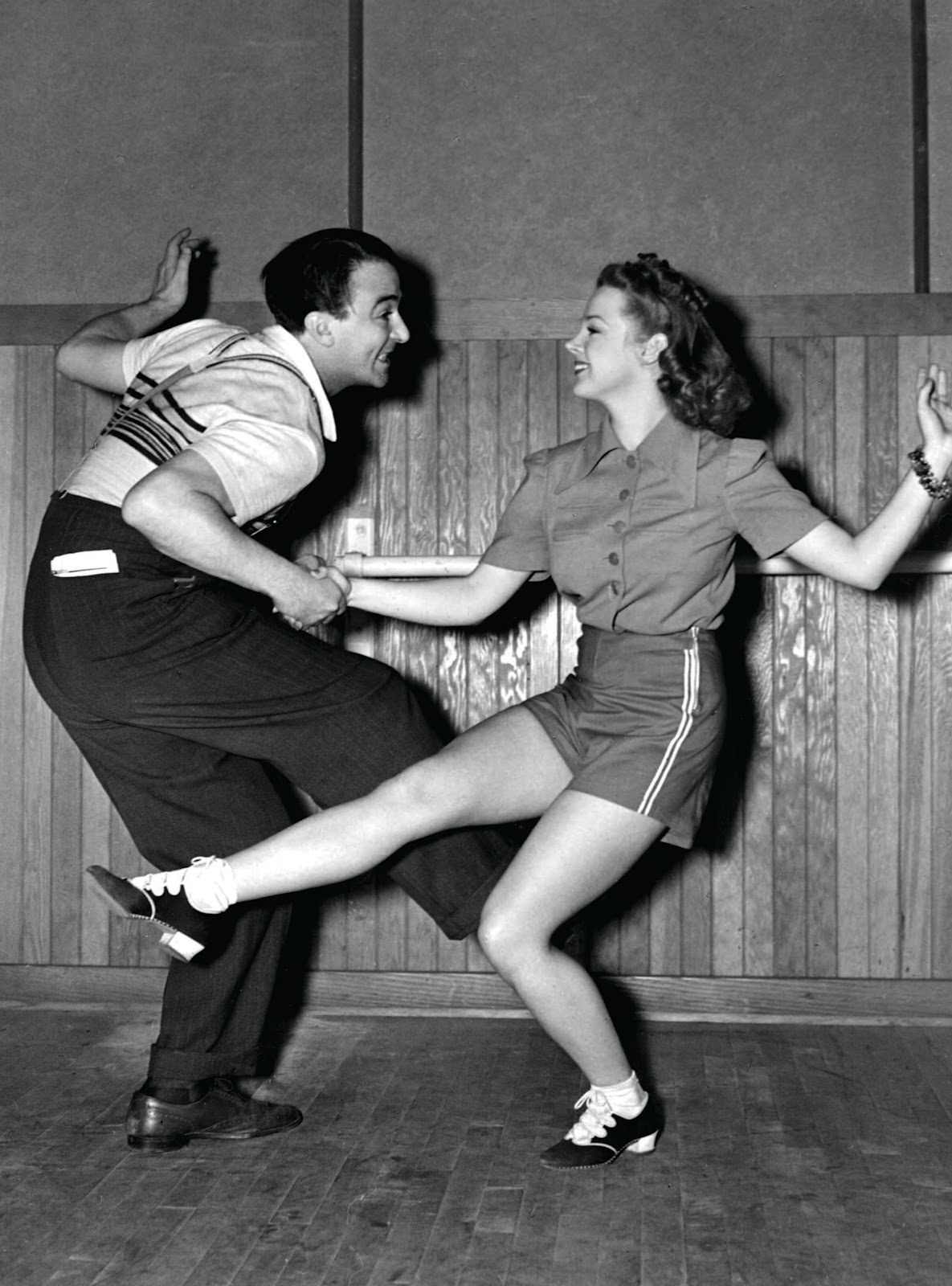
The East Coast swing is next on our types of ballroom dances list. This ballroom dance emerged in the United States during the 1940s as a variation of the Lindy Hop. At the time, people called it the “Eastern Swing”.
The East Coast swing features a lot of turns, spins, and hair loops. Like most types of ballroom dance, dancers make use of their bent knees. The dance has six steps, usually with a pattern of triple steps.
While dancers usually choose band music for their routines, any kind of music can work for the East Coast swing. In fact, some also dance to rock and roll, country, and pop songs.
Over the years, variations of the East Coast swing emerged as their own ballroom dance type. Some examples are the Charleston and the shag. The West Coast swing, however, is not one of them, contrary to popular belief.
Bolero
Among the types of ballroom dances, Bolero is one of the slowest. Bolero is a partner dance from 18th century Spain. As the dance grew more popular, it reached Cuba, where dancers adapted the dance to their local music.
Bolero’s distinct characteristic is its slow and sensual movements. The ballroom dancers focus on their grace while performing rise and fall motions. As one of the slowest dances, bolero music is usually around 96 beats per minute.
A typical bolero routine has five distinct parts. These are the “paseo”, “traversa”, “differencias”, “finales”, and “bien parado”. Each part is vital in telling the story of the dancers while highlighting its Spanish and Cuban roots.
Bolero belongs solely to the American Rhythm style. Competitions under the International styles do not include a category for this dance.
Mambo
Several types of ballroom dance originated in Cuba. The Mambo is yet another example. Developed in the 1940s, mambo dance emerged as a companion to the music genre with the same name.
Today, mambo is a popular choice because of its energetic rhythm. The dance features hip movements and arm movements. Facial expressions also contribute to the emotional performance of mambo dancers.
Mambo music is often Latin music, and it uses a time signature of 4/4. While dancing, the partners move forward and backward with a mix of quick and slow steps.
Like the Bolero, the mambo dance only belongs to the American Rhythm style. It is also important to note that this dance is different from “mambo on 2”, which emerged as a distinct style in New York.
Quickstep
As the name suggests, the Quickstep is a type of ballroom dance that features quick steps and runs. In fact, the quickstep is a faster variation of the foxtrot. It emerged in New York City during the 1920s as a combination of the foxtrot and swing dances.
As one of the fastest types of ballroom dance, quickstep is also one of the hardest to learn. It involves a lot of hops, skips, and steps that must be fast and elegant. Dancers have to look light on their feet too. Sluggish movements and poor form would betray the nature of the dance.
The quickstep is part of the International Standard style, but the American styles of dance do not include the quickstep in competitions. Of course, this doesn’t mean quickstep isn’t danced in the US.
There are some schools that teach quickstep as a social dance. Furthermore, quickstep is often a popular choice for talent shows on TV, including Dancing with the Stars!
Samba
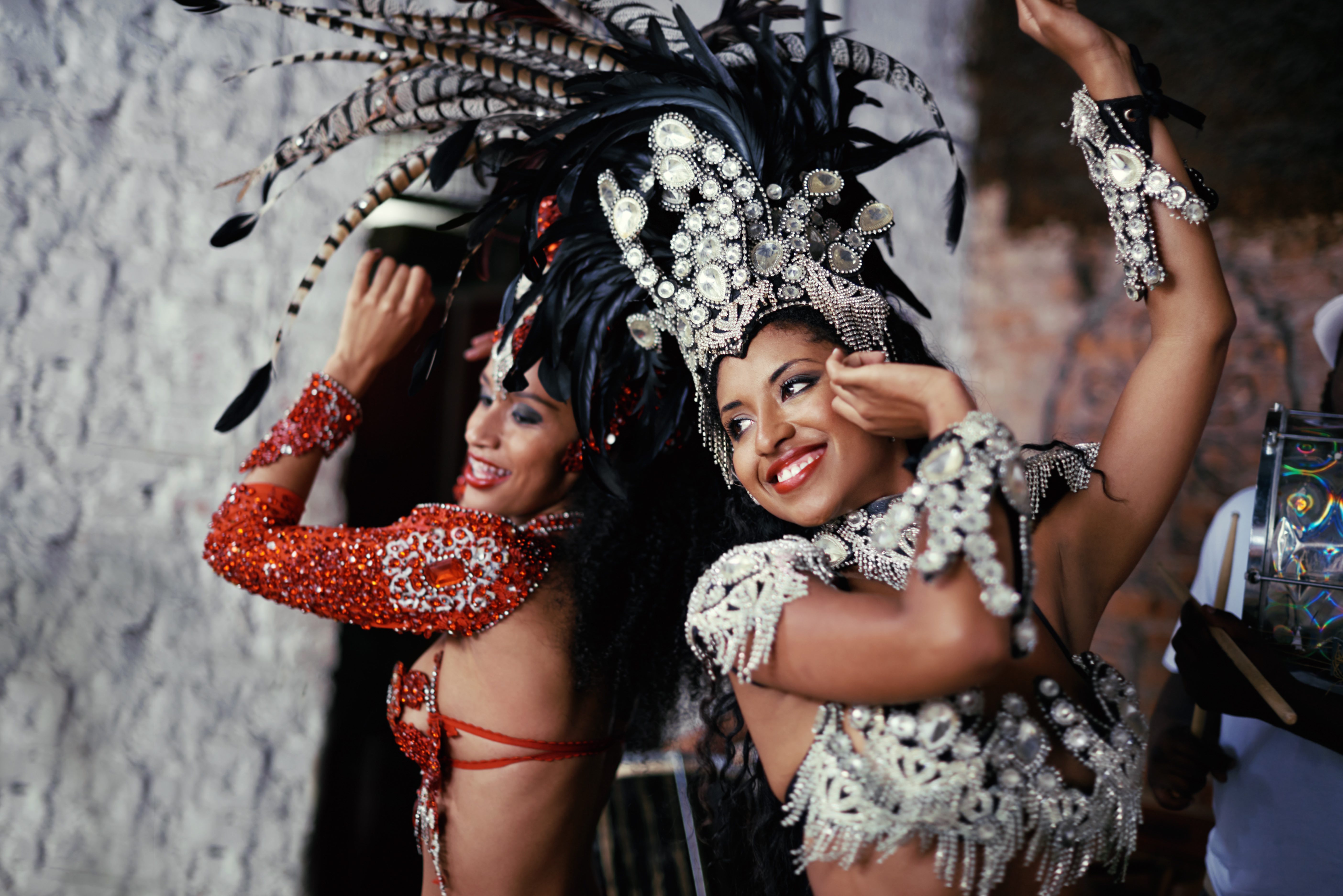
To many, the most festive among the types of ballroom dance is the samba. The samba is a ballroom dance from Brazil. It was originally a solo dance performed by a “Sambista” at Rio de Janeiro carnivals and other celebrations. In the 1930s, samba developed into a partner dance.
As a ballroom dance, samba is an energetic dance where sambistas focus on lots of swaying movements. Samba routines feature fast footwork with “bounces” that mimic Brazilian carnivals.
The International Latin style includes the samba in their competitions. However, neither of the American styles has samba in their curriculum. Despite this, samba is the most popular Brazilian ballroom dance.
Paso Doble
The Spanish words “paso doble” translate to “double step”. As its name suggests, the Paso Doble, sometimes spelled “pasodoble”, is a Latin ballroom dance with Spanish roots.
Compared to other types of ballroom dance, many believe the Paso Doble to be the most theatrical. This ballroom dance mimics a Spanish bullfight, with the leader acting as the matador and the follower as the matador’s cape or the bull. With this skit in mind, dancers perform with as much drama as possible.
Despite its Spanish origins, many believe the dance actually originated in France. The French had a military march with a similar name, the “Paso Redoble”. Since the dance also had marching steps, it made sense that the Paso Doble and Paso Redoble are related.
Either way, the Paso Doble is a ballroom dance people all over the world practice. The International Latin includes the Paso Doble in its competitions.
Jive
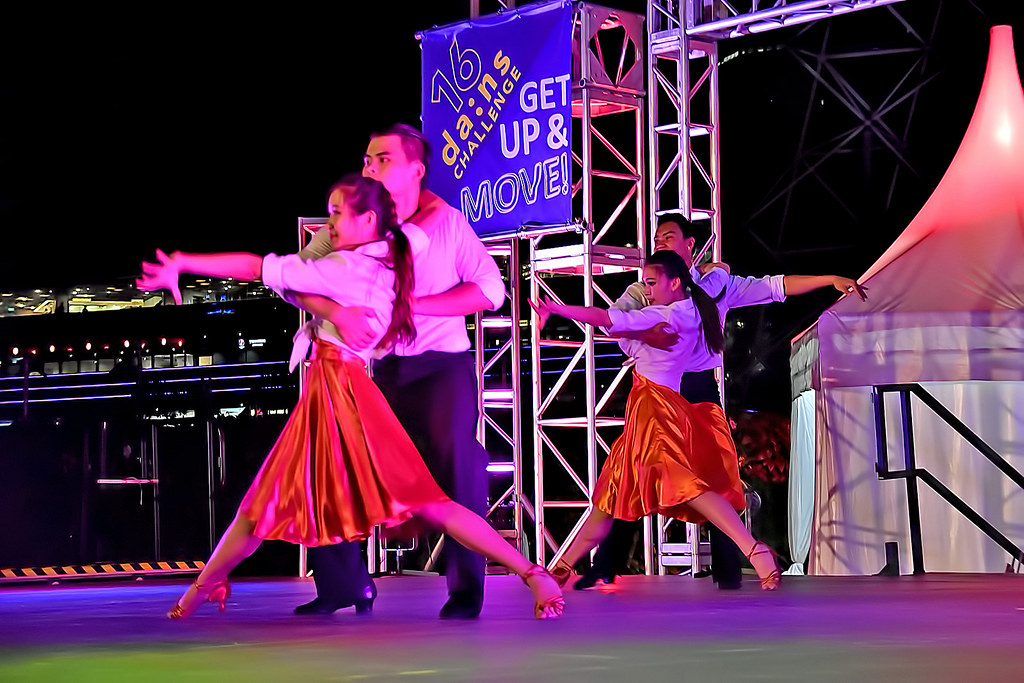
If you’re looking for more energetic types of ballroom dance, then the jive is a brilliant choice! The jive is a lively ballroom dance with lots of kicks and flicks. It originated in the United States in the early 20th century as an African American social dance.
Unlike most types of ballroom dance, jive dancers don’t glide across the dance floor. Instead, the dancers only use a small section of the dance floor.
Their flashy dance moves, however, make it seem like the dancers are taking up a lot of space. With one leading and the other following, the dancers incorporate a lot of spins and throws in their routine.
To dance the jive, dancers have to be quick on their feet. Jive is the fastest style in the International Latin dance, with most jive music having 176 beats per minute.
Salsa
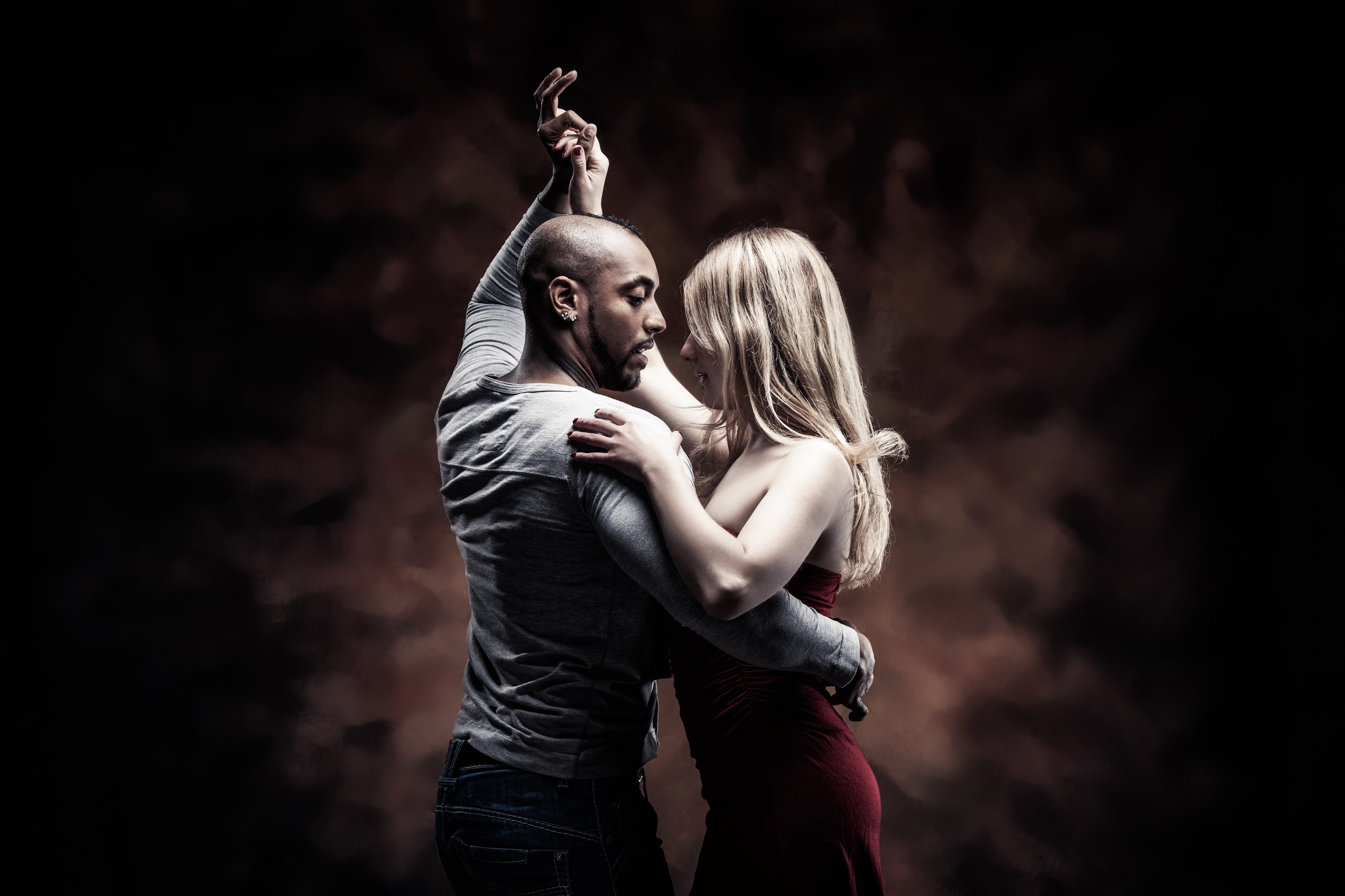
Not all types of ballroom dance fall under the American and International styles of dance. Some of them are nontraditional dances, yet they continue to be popular ballroom dances people all over the world practice. One example is salsa.
Salsa is a Latin dance that rose to popularity in the 1960s. Before that, salsa emerged as a social dance in the 1920s in Eastern Cuba. Several other dances, such as the tango, mambo, and cha-cha, all influenced this dance.
Similar to these dances, the salsa focuses on swinging hip movements. However, salsa only uses the lower body as the upper body stays level.
There are many variations of salsa. Some examples include the New York style, Los Angeles style, and the Miami-style Casino.
Merengue
Some types of ballroom dance can certainly be hard to learn, but the merengue is a fun and easy dance for beginners! It is the national dance of the Dominican Republic.
This dance comprises a five-beat rhythmic pattern called “quintillo”. The partners hold each other’s hands as they dance in “walking steps” for every beat of the music. Like most Latin dances, merengue involves swaying your hips. However, the hip movement results from the bending of the knees instead of twisting the torso.
Because of its cheerful music, merengue is a popular choice for social gatherings. People often dance to the merengue at nightclubs, parties, and even weddings!
Some also dance merengue professionally and take part in several competitions. However, this type of ballroom dance falls under nontraditional styles, so it does not belong to the American and International schools of dance.
Bachata
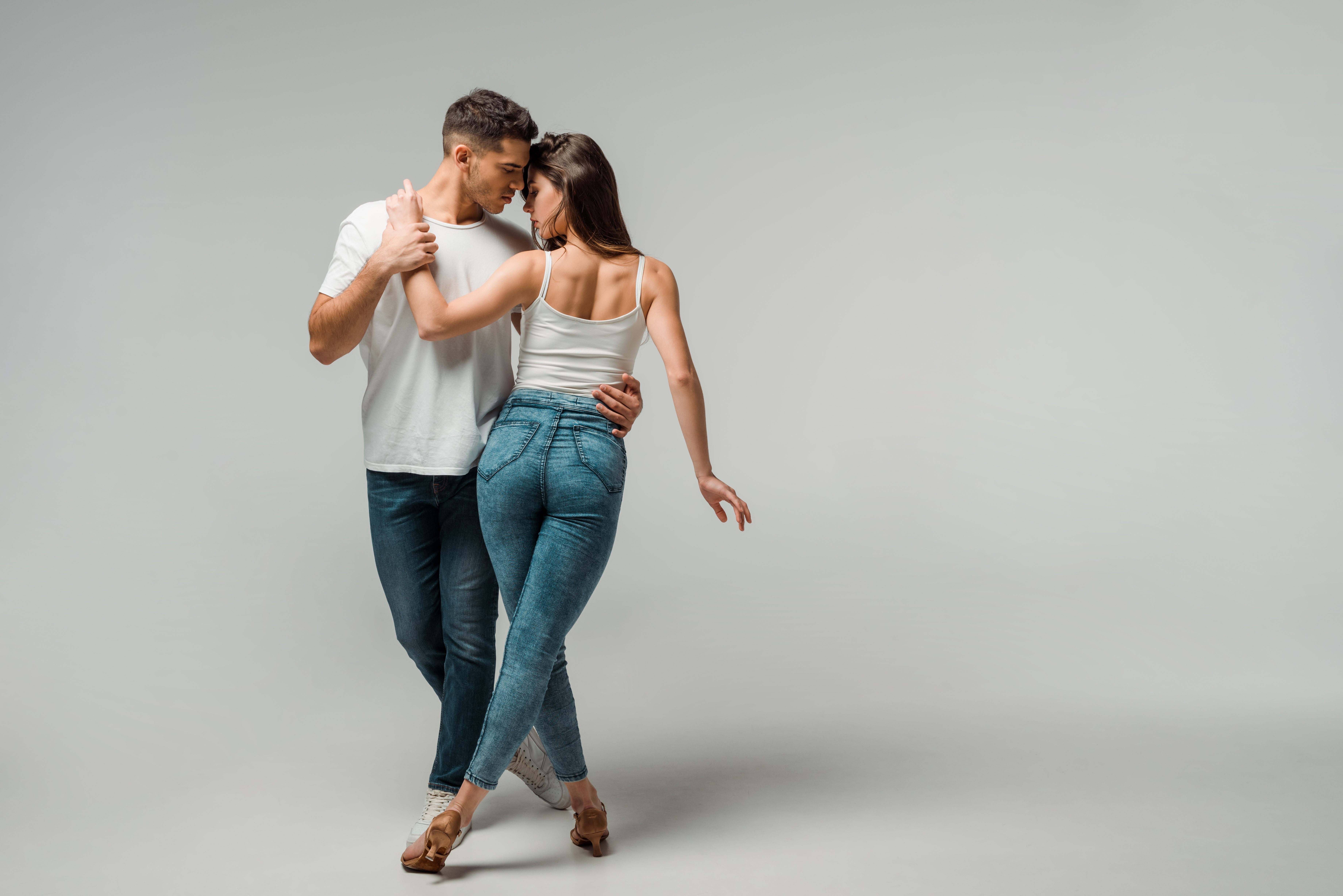
Another dance from the Dominican Republic is the bachata. Bachata is a Latin dance that emerged during the 1960s. Unfortunately, Rafael Trujillo, a Dominican dictator, censored the bachata and its music for decades.
Trujillo saw bachata as low-class art, so dancers could only perform the bachata at brothels and bars. Following Trujillo’s death, the dance and music could finally flourish. Bachata musicians and dancers finally rose to popularity.
Unlike most types of ballroom dance, bachata allows the dancers much more freedom. Dancers can decide whether they’ll dance in an open, closed, or semi-closed position. Whichever position they choose, they must not forget the Cuban hip motion.
Swaying their hips using their knees is an important feature of the bachata. In fact, the counts of this dance are “one, two, three, hip”. The female partner sways her hips during the fourth beat.
Kizomba
This next ballroom dance is from the Republic of Angola. Angola is the seventh-largest country in Africa, where people speak Kimbundu. The word, “kizomba”, is a Kimbundu word for “party”, which is a fitting word for a musical genre and a dance.
Kizomba emerged as a social dance in the 1990s, when Angolan dancers adapted semba dances to kizomba music. The dance partners must synchronize with one another perfectly, with one leading the other across the dance floor.
Over time, other types of ballroom dances influenced the original and led to new variations. Some examples include Kizomba Fusion, Urban Kiz Tango, and many more. Today, kizomba is a popular dance in countries like Brazil, China, and Cape Verde.
Lindy Hop

During the 1920s in Harlem, New York, Lindy Hop emerged as its own dance. Several types of ballroom dance helped shaped the Lindy Hop, such as Charleston, foxtrot, and other swing dances.
Lindy Hop comprises quick footwork and turns. This high-energy dance can also include aerials and swing-outs. These features make the Lindy Hop a flashy and entertaining dance.
By the 1930s, people loved watching Lindy Hop dancers so much that they appeared in Hollywood films and world exhibitions. Today, the popularity of Lindy Hop continues as people all over the world practice the dance.
Several dance camps continue to host Lindy Hop classes and competitions. Northern Sweden, for example, hosts the annual Herrang Dance Camp, where they invite Lindy Hop dancers from all over the world.
Hustle
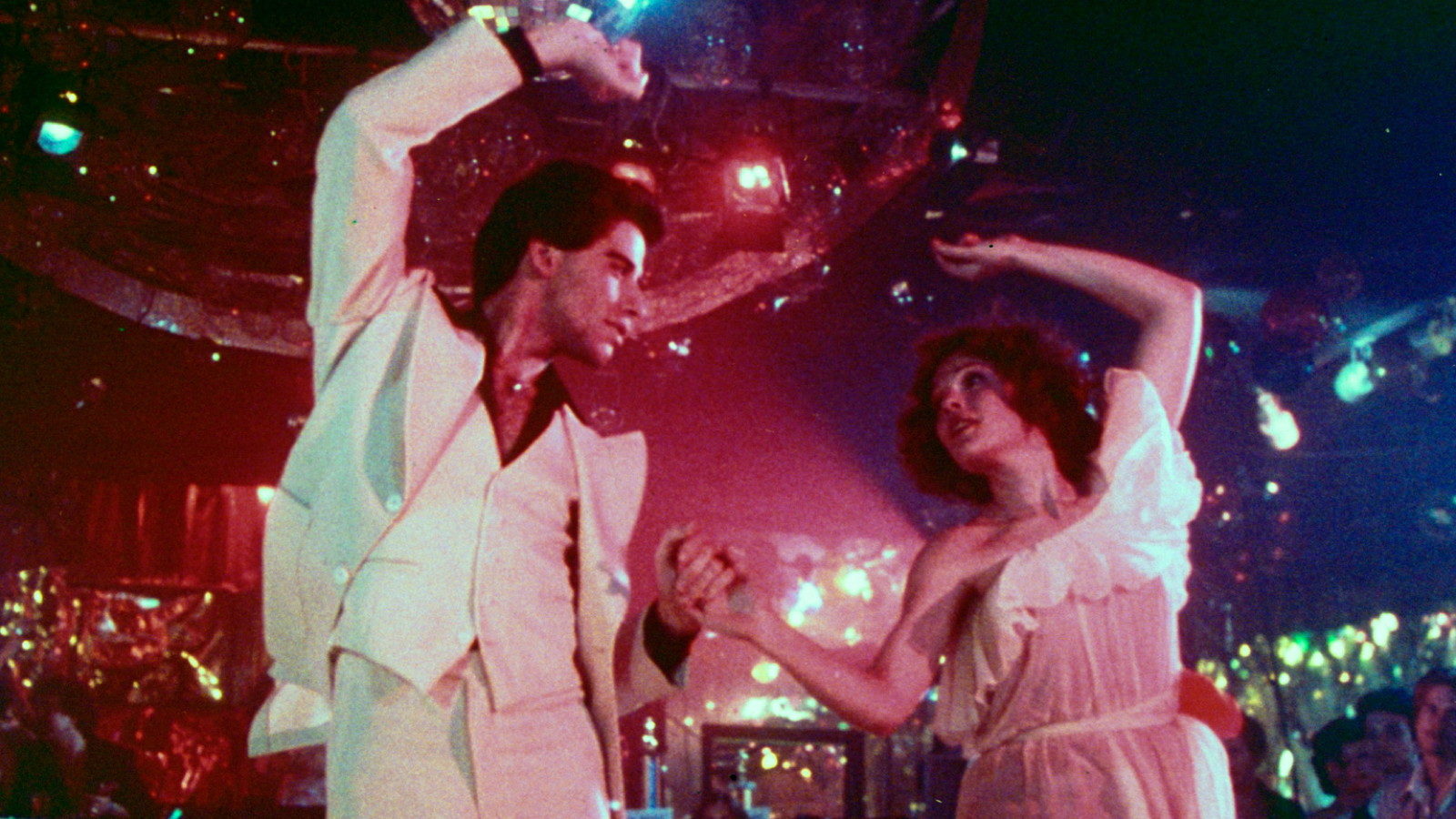
Have you watched the iconic dance film Saturday Night Fever? It featured the line and partner forms of the next ballroom dance on this list. Hustle is a type of ballroom dance that emerged as a partner dance in ballrooms and disco clubs.
As a partner dance, hustle is like the mambo, salsa, and swing dance. It features a lot of spinning, with the dancers breaking away from each other from time to time. Most routines incorporate wheels, turns, and side breaks.
In the past, it also required quick footwork to follow along with the disco music. Today, however, many performers choose contemporary pop music for their routines, which makes it slower and easier for beginners to learn.
Argentine Tango
Like most types of ballroom dance, the Argentine tango emerged alongside the musical genre of the same name. Argentine tango is a social dance and musical genre from Buenos Aires.
During the late 19th century, tango was nothing more than the “music of the underprivileged”. Its popularity increased not for long when European immigrants and African slaves influenced its style.
Today, many confuse the Argentine tango with the traditional tango. However, these two are very different. The traditional Argentine tango is open to improvisation from the partners. The partners focus more on each other rather than the choreography.
There are several styles of the Argentine tango. Some examples are the Salon tango and Tango Nuevo.
West Coast Swing
Another type of ballroom dance that allows dancers to improvise is the West Coast swing. As the name suggests, the West Coast swing emerged on the West Coast during the 20th century.
This ballroom dance is a “slotted dance”, which refers to a dance where partners must stay in a specific “slot” on the dance floor. While dancing, the partners can only move forward and backward in a straight line. Because of this, the dance has an “elastic look” to it.
Aside from this rule, however, the West Coast swing is fun and improvisational. Dancers can incorporate different styles according to their tastes and interpretation.
Traditionally, people only danced West Coast swing to slow swing music. Today, many perform the dance to hip-hop and pop music.
Charleston
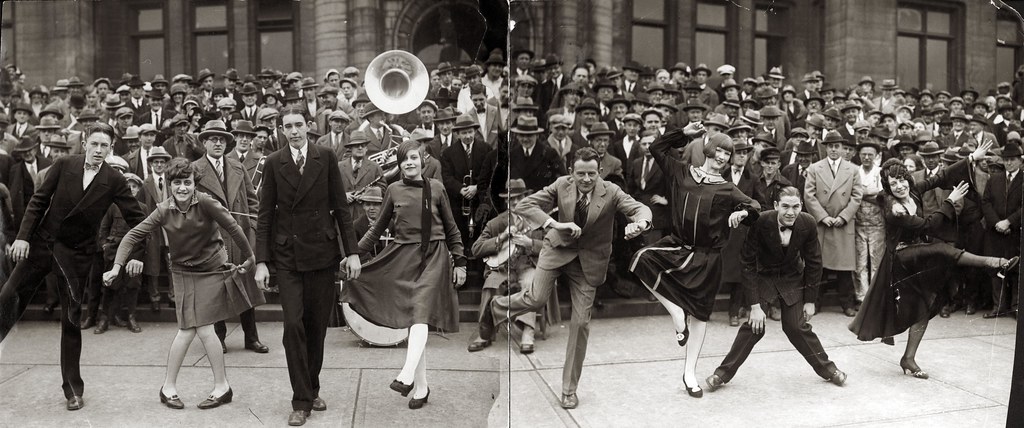
Named after a harbor city in South Carolina, the Charleston is a popular dance from the 1920s. This was during the Roaring Twenties, when women wore flappers and danced to jazz music.
Like other swing dances, the Charleston features a lot of improvisation from the dancers. Josephine Baker, a famous dancer, used to cross her eyes while dancing the Charleston to make it sillier. However, its distinct feature is its “toes in and heels out” dancing.
The Charleston can be a solo, partner, or group dance. Regardless of the number of dancers, this social dance comprises similar steps and swing movements.
Balboa
Balboa is a swing dance that emerged in Southern California during the 20th century. While it took form as early as the 1910s, it only rose in popularity in the 1930s.
This ballroom dance features partners in the closed position, where one partner leads and another follows. Many consider the balboa to be a “dancer’s dance” instead of a “spectator’s dance” because of its subtle movements.
Rather than putting on a show for other people, the dancers focus on connecting with each other. They maintain a full-body connection while leading, following, and shuffling.
Balboa music can vary from 100 to 300 beats per minute, so it can be fast or slow.
Shag
Last but not least is the shag. The shag is a partner dance that emerged during the 1930s at open-air beach parties. To this day, people still dance the shag to beach music.
This dance features a six-count rhythm, with most music around 100 to 130 beats per minute. Shag is also a slotted dance, so partners can only move forward and backward in a small spot. The partners focus on dancing completely in sync. One dancer leads, while the partner follows with the same step.
In 1984, South Carolina chose the shag as its official state dance. In fact, many refer to the shag as the “swing dance of the South”.
Was this page helpful?
Our commitment to delivering trustworthy and engaging content is at the heart of what we do. Each fact on our site is contributed by real users like you, bringing a wealth of diverse insights and information. To ensure the highest standards of accuracy and reliability, our dedicated editors meticulously review each submission. This process guarantees that the facts we share are not only fascinating but also credible. Trust in our commitment to quality and authenticity as you explore and learn with us.
